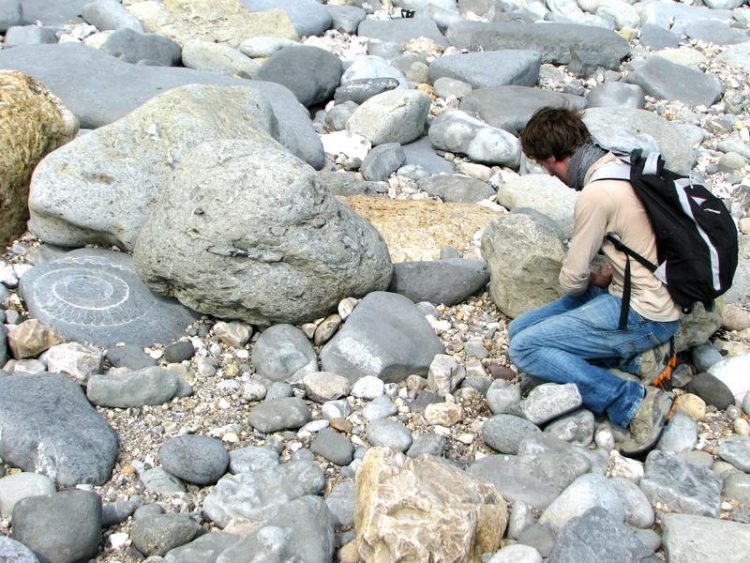Competition from the ancestors of cats drove the extinction of many species of ancient dogs

Competition from the ancestors of cats drove the extinction of many species of ancient dogs Michele Silvestro
An international team including scientists from the Universities of Gothenburg (Sweden), São Paulo (Brazil) and Lausanne (Switzerland) analyzed over 2000 fossils and revealed that the arrival of felids to North America from Asia had a deadly impact on the diversity of the dog family, contributing to the extinction of as many as 40 of their species.
“We usually expect climate changes to play an overwhelming role in the evolution of biodiversity. Instead, competition among different carnivore species proved to be even more important for canids” says leading author Daniele Silvestro at the Department of Biological and Environmental Sciences, University of Gothenburg.
The dog family originated in North America about 40 million of years ago and reached a maximum diversity around 22 million of years ago, when more than 30 species inhabited the continent. Today, only 9 species of the dog family live in North America.
They progressively increased in body size and specialized into becoming large predators. Some of them exceeded 30 Kg (66 pounds) and were among the largest carnivores on the North American continent. Although several large carnivores today face a higher extinction risk than smaller species, the authors of the study found no evidence of a similar pattern in ancient canid species.
The evolutionary success of carnivorous animals is inevitably linked to their ability to obtain food. The limited amount of resources (preys) imposes strong competition among carnivores sharing the same geographic range. For instance African carnivores such as wild dogs, hyenas, lions and other felids are constantly competing with each other for food.
North American carnivores in the past might have followed similar dynamics and much of the competition is found among species of the dog family and from ancient felids and dogs. Interestingly, while felids appeared to have a strongly negative impact on the survival of ancient dogs, the opposite is not true. This suggests that felids must have been more efficient predators than most of the extinct species in the dog family.
Details on the publication
Silvestro D, Antonelli A, Salamin N, Quental T B: The role of clade competition in the diversification of North American canids. Proceedings of the National Academy of Science USA (2015). The full article is available free of charge at the following link: http://www.pnas.org/content/early/2015/06/23/1502803112.abstract
Contact
Dr. Daniele Silvestro, phone +41 764 909931, e-mail: daniele.silvestro@unil.ch University of Gothenburg, Sweden & University of Lausanne, Switzerland.
Prof. Tiago B. Quental, phone +55 11 3091-0967, e-mail: tbquental@usp.br University of São Paulo, Brazil.
http://www.gu.se/english/about_the_university/news-calendar/News_detail//competi…
Media Contact
All latest news from the category: Life Sciences and Chemistry
Articles and reports from the Life Sciences and chemistry area deal with applied and basic research into modern biology, chemistry and human medicine.
Valuable information can be found on a range of life sciences fields including bacteriology, biochemistry, bionics, bioinformatics, biophysics, biotechnology, genetics, geobotany, human biology, marine biology, microbiology, molecular biology, cellular biology, zoology, bioinorganic chemistry, microchemistry and environmental chemistry.
Newest articles

High-energy-density aqueous battery based on halogen multi-electron transfer
Traditional non-aqueous lithium-ion batteries have a high energy density, but their safety is compromised due to the flammable organic electrolytes they utilize. Aqueous batteries use water as the solvent for…

First-ever combined heart pump and pig kidney transplant
…gives new hope to patient with terminal illness. Surgeons at NYU Langone Health performed the first-ever combined mechanical heart pump and gene-edited pig kidney transplant surgery in a 54-year-old woman…

Biophysics: Testing how well biomarkers work
LMU researchers have developed a method to determine how reliably target proteins can be labeled using super-resolution fluorescence microscopy. Modern microscopy techniques make it possible to examine the inner workings…





















